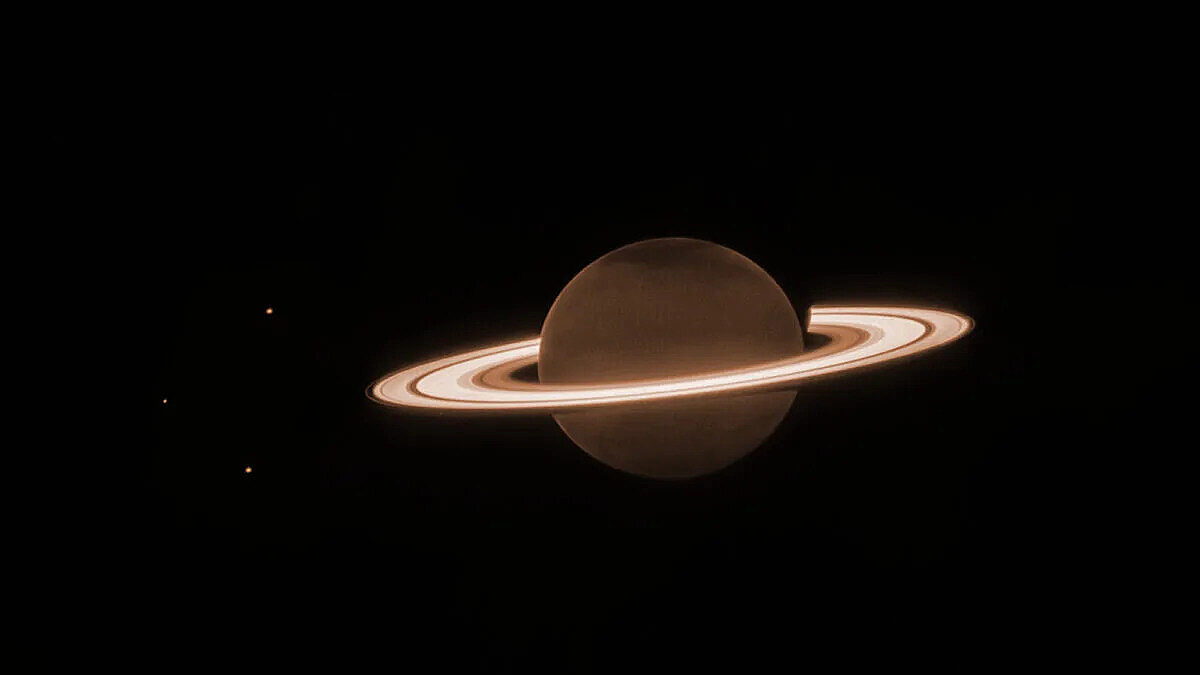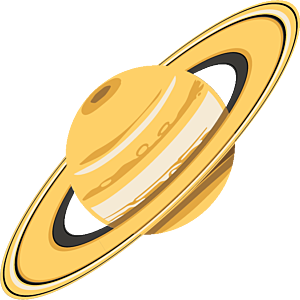The Downlink • Jul 21, 2023
That’s a mare
Space Snapshot

JWST recently captured this striking view of Saturn in the near-infrared. The ice and rock in the rings shine brighter than the gasses in the planet’s body. Faint differences in brightness can give scientists insights into processes taking place in both structures. On the left, you can also see Saturn's moons Dione, Enceladus, and Tethys. Image credit: NASA et al.
You love space, now take action
This weekly newsletter is your toolkit to learn more about space, share information with your friends and family, and take direct action to support exploration. Anyone can subscribe at planetary.org/connect to receive it as a weekly email.
Mission Briefings


NASA has announced a new project to investigate volcanic terrain on the Moon. Artemis’ cadence of robotic lunar missions will include a new scientific payload called DIMPLE — Dating an Irregular Mare Patch with a Lunar Explorer — to study the Ina Irregular Mare Patch, an area of hilly terrain (pictured) created by volcanic activity on the near side of the Moon. Image credit: NASA LRO.

China’s plans for a Moon landing are coming together. The China Manned Space Agency recently announced a more formalized set of plans to land a pair of astronauts on the surface of the Moon before the end of the decade. The mission would involve separately launching a crewed spacecraft and lander segments, which would rendezvous and dock in lunar orbit before landing on the lunar surface. The agency is also calling for proposals for science payloads to travel on the lunar lander.

The director of NASA’s Marshall Space Flight Center is retiring. Jody Singer announced her retirement this week after more than 38 years of service. Singer was Marshall’s first female center director, among many firsts in her career.
From The Planetary Society


The gullies of Mars are more complex than they may appear. Although the formations look similar to water-carved channels on Earth, their formation is more complex. Caltech's Jay Dickson joins this week’s Planetary Radio to discuss how the red planet’s changing axial tilt and Martian climate change affect these structures and more. Pictured: Martian gullies imaged by the Mars Reconnaissance Orbiter. Image credit: NASA/JPL-Caltech/University of Arizona.

Mars Sample Return is complex too — and in danger of being canceled. The U.S. Senate has warned that if NASA’s Mars Sample Return campaign can’t stay on budget, it may be canceled altogether. The Senate committee responsible for funding NASA said that if the agency can’t come up with a plan in six months that would contain the Mars Sample Return project to a lifetime cost of $5.3 billion, its remaining funding would be carved up and allocated to other programs, primarily Artemis. Planetary Society Chief of Space Policy Casey Dreier explains the situation in more depth.
What's Up

Venus will be dropping below the western horizon over the next few weeks, so catch it while you can, looking bright in the west after sunset. Mars shines more dimly above Venus. Saturn rises in the middle of the night in the east, looking yellowish. Jupiter comes up a couple of hours later, shining alongside Saturn until dawn. Learn more about what the rest of July’s night skies have in store.
Wow of the Week

We often use this section to share space artwork, but this week we’re swapping in a recent JWST image that looks as though it was created using the brushstrokes of a master artist. The JWST team shared this image on the one-year anniversary of the space telescope’s first science image releases. It shows the closest star-forming region to Earth (390 light-years away), known as the Rho Ophiuchi cloud complex. Image credit: NASA/ESA/CSA/STScI/Klaus Pontoppidan (STScI).
Send us your artwork!
We love to feature space artwork in the Downlink. If you create any kind of space-related art, we invite you to send it to us by replying to any Downlink email or writing to [email protected]. Please let us know in your email if you’re a Planetary Society member!


 Explore Worlds
Explore Worlds Find Life
Find Life Defend Earth
Defend Earth

